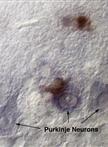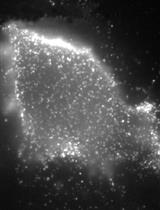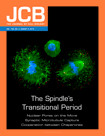- Submit a Protocol
- Receive Our Alerts
- Log in
- /
- Sign up
- My Bio Page
- Edit My Profile
- Change Password
- Log Out
- EN
- EN - English
- CN - 中文
- Protocols
- Articles and Issues
- For Authors
- About
- Become a Reviewer
- EN - English
- CN - 中文
- Home
- Protocols
- Articles and Issues
- For Authors
- About
- Become a Reviewer
Immunolabelling of Thin Slices of Mouse Descending Colon and Jejunum
Published: Vol 3, Iss 20, Oct 20, 2013 DOI: 10.21769/BioProtoc.942 Views: 10216
Reviewed by: Lin Fang

Protocol Collections
Comprehensive collections of detailed, peer-reviewed protocols focusing on specific topics
Related protocols

Combined in situ Hybridization/Immunohistochemistry (ISH/IH) on Free-floating Vibratome Tissue Sections
Manuel E. Lopez
Sep 20, 2014 15455 Views

Measuring the Endocytic Recycling of Amyloid Precursor Protein (APP) in Neuro2a Cells
Florent Ubelmann [...] Claudia Guimas Almeida
Dec 5, 2017 8128 Views

Non-separate Mouse Sclerochoroid/RPE/Retina Staining and Whole Mount for the Integral Observation of Subretinal Layer
Sung-Jin Lee and Soo-Young Kim
Jan 5, 2021 4418 Views
Abstract
This protocol describes a method for efficient immunolabelling of thin tissue slices containing a few rows of intact intestinal crypts, which yields large numbers of them being oriented favorably for recording stacks of optical sections aligned with the crypt long axis (Bellis et al., 2012). The latter can then be used for cell positional analysis, 3D-reconstruction and -analysis. The simple epithelium lining the small intestine is organized into contiguous crypts of Lieberkühn (Potten, 1998; Barker et al., 2012; De Mey and Freund, 2013) several of which making up a crypt/villus unit. Each crypt is a multicellular proliferation unit with a tight hierarchical organization. Under steady state conditions, the epithelium is continuously and rapidly renewed, driven by divisions of multipotent intestinal SCs near the crypt base and cell removal from the villus tip. Techniques for analyzing the organization of the crypts play an important role in the field. Maximal efficiency is obtained by using optical sections obtained from confocal scanning and/or Nomarski optics passing through the center of the longitudinal crypt axis to view the crypt as two cell columns of hierarchical lineage starting from cells positioned at or near the crypt base. This enables positional analysis of certain cellular capacities like performing DNA synthesis, undergoing mitosis and apoptosis (Caldwell et al., 2007; Fleming et al., 2007; Quyn et al., 2010), responding to injury (Potten et al., 1997), or expressing genes (Barker et al., 2012; Bjerknes et al., 2012; Itzkovitz et al., 2012). Our protocol has allowed us to demonstrate that some divisions are asymmetric with respect to cell fate and the occurrence of oriented cell division (OCD) in 80% of the proliferating cells in the upper stem cell and transit amplifying zones. It has further revealed planar cell polarities which are important for crypt homeostasis and stem cell biology and alterations in apparently normal crypts and microadenomas of mice carrying germline Apc mutations shedding new light on the first stages of progression towards colorectal cancer.
Materials and Reagents
- Mouse
- Isoflurane gas (Abbott Laboratories)
- Dissection pan wax (black) (Fisher Scientific, catalog number: S17432 )
- Pipes
- HEPES
- EGTA
- MgSO4
- Triton-X-100
- Taxol (Paclitaxel from Sigma-Aldrich, catalog number: T7191 )
- PBS
- NaN3
- Sodium deoxycholate
- BSA 10% in PBS
- Tri-sodium citrate dihydrate (Merck KGaA, catalog number: 567446 )
- 1 N HCl (1 mol/L) (Merck KGaA, catalog number: 1090571000 )
- Paraformaldehyde (PFA) 16% solution, EM grade (Electron Microscopy Sciences, catalog number: 15710 )
- Phalloidin-Alexa 568 (Life Technologies, Molecular Probes®, catalog number: 12380 )
Note: The Alexa type may be chosen according to available other fluorophores. - DAPI: 1 mg/ml stock solution in PBS (stored at 4 °C)
- Alexa-labeled secondary antibodies. In our study, these were from Life Technologies- Molecular Probes goats anti (species) IgG (H + L) and all highly cross-adsorbed to assure absence of cross-species-reactivity.
Note: For any combination of primary antibodies, a choice of corresponding secondary antibodies and fluorophore wavelengths has to be made. When as in our case, Phalloidin-Alexa 568 (red fluorescence) is used for marking microfilaments made of actin, and DAPI for DNA, secondary antibodies are usually labelled with Alexa 488 (green fluorescence) and Alexa 647 (far-red fluorescence). The latter is recommended for antigens giving weak signals, since it is very well detected by current confocal microscopy systems. When Phalloidin could not be used, Alexa 568 or 555 (red fluorescence) labelled secondary antibodies could be used in addition.
Note: In our study, no commercial primary antibodies were used. - Prolong Gold mounting medium without DAPI (Life Technologies, catalog number: P36934 )
- 2x PHEM (see Recipes)
- Fixative (see Recipes)
- 20 mM Sodium citrate buffer (see Recipes)
- Solutions of primary affinity-purified antibodies (see Recipes)
- Solutions of secondary antibodies (see Recipes)
Equipment
- Thermostatic water bath
- Tem Sega evaporator apparatus for isoflurane anesthesia
- Scissors 3 cm and microscissors (Fine Science Tools)
- Forceps n°5 (Fine Science Tools)
- Binocular
- 30 G 1/2” needles
- U-100 Insulin syringe + needle
- Microscope slides 76 x 26 x 1.1 mm
- 1.5 ml Eppendorf tubes
- Micropipettes
- 18 x 18 mm glass coverslips Nr. 1
- Fast confocal microscope (we use a Leica SP5 confocal microscope)
- 63x NA 1.4 oil immersion lens
Procedure
- Sample preparation
- The mouse needs to be anesthetized during tissue collection. 10 min before anesthetizing it, prepare 15 ml PHEM 1x (from PHEM 2x) in a 50 ml plastic tube and warm it to 37 °C in a thermostatic water bath. Transport the tube in a recipient filled with water at 37 °C to the dissection room and use within minutes.
- Anesthetize the mouse using isoflurane inhalation with the help of the Tem Sega evaporator.
- While continuing anesthetizing, place it under a binocular microscope placed in a chemical extraction hood, so that the operator does not inhale isoflurane and formaldehyde gases.
- Open the abdomen with fine scissors, localize the distal (descending) colon with respect to the anus, free it from surrounding tissue and transect it about 2.5 cm from the latter. For the jejunum, transect it about 2.5 cm from the caecum/proximal colon. For a scheme of the mouse digestive tract, see: http://www.informatics.jax.org/cookbook/figures/figure76.shtml.
Note: For our study, preservation of sensitive cytoskeleton-based structures like mitotic spindles was essential and could only be achieved by rapid handling. We therefore used one animal per intestinal segment and did not straighten out the intestine. For other studies, for example the presence of certain transcription factors in the nucleus of certain cell types, this is probably less critical. - Using a syringe, flush the colon or jejunum section with PHEM 1x at 37 °C.
Note: 37 °C is important for avoiding changes to mitotic spindles that are temperature sensitive. For other studies, this may be less critical. - Flush it immediately with fixative supplemented with 15 μM taxol.
Note: The fixative contains PHEM buffer, known to optimize the preservation of Ca2+ sensitive microtubules (Schliwa and van Blerkom, 1981) and some Triton-X-100 to accelerate the speed of fixation. It is supplemented with taxol, to further prevent microtubule loss. Taxol indeed binds to microtubules and makes them resistant to degradation by formaldehyde fixation. Without added taxol, spindles were found to be shorter and sometimes distorted, making the measurement of spindle angles as described in our study unreliable. When preservation of microtubules is not essential, taxol may be left out. PHEM buffer, however, is recommended since it prevents pH changes during formaldehyde fixation better then for example PBS. - Cut out a segment of 1-2 cm and place it in a cup filled with hardened dissection pan wax (black) filled with 5 ml of fixative at room temperature. Open the colon or jejunum segments with fine scissors by cutting them along their length.
- Sacrifice the mouse by cutting through the septum into the heart with scissors.
- Pin the tissue flattened and lightly stretched on the wax surface, mucosa up, and continue fixation for 40 min at room temperature.
- After about ten minutes, while in fixative, cut the tissue into small 1.5 mm3 cubes, with the help of microscissors.
- Transfer these into a 1.5 ml Eppendorf tube and after a total of 40 minutes rinse them three times 10 min in PBS. They can now be stored at 4 °C in PBS supplemented with 8 mM NaN3 for several weeks.
- Using a cut-off blue tip on a micropipette, transfer a few pieces onto a microscope slide placed under a binocular. For colon fragments only, remove the muscle lining using two thin 30 G 1/2” needles fixed on a U-100 insulin syringe. To this end, the muscle lining must first be positioned underneath the mucosa layer. They are then separated by inserting one needle between the layers and using it for keeping the muscle layer fixed in place, while using the other to slide or peel the mucosa away.
Note: The muscle lining of the jejunum is thin and fragile, and does not need to be removed. - Using one of the needles as a cutting device while holding in place the mucosa fragment with the other one cut away thin around 1.5 mm long slices containing two to three rows of contiguous crypts. Transfer 30-40 such slices into a 1.5 ml Eppendorf tube. All subsequent steps are performed in such Eppendorf tubes, one per primary antibody combination.
- Mount the tubes with about 30 mucosa slices on a rotating wheel and incubate successively during 30 min with 1 ml of PBS containing 200 mM NH4Cl, 3% sodium deoxycholate in H2O, 0.5% Triton-X-100 in PBS and PBS/BSA 1%/Triton 0.2% for blocking. Use a 1 ml blue tip mounted on a micropipette to remove liquids after each incubation step after the slices have sunk by gravity to the tube bottom. Take care to avoid losing slices by holding the tube against a light source.
Note: Preparation of the deoxycholate solution in H2O is imperative. - For labeling with certain antibodies (for example against the transcription factors Atoh1 or Cdx2), perform antigen retrieval by incubating the tubes containing the samples with 1 ml of 0.1 mM sodium citrate buffer, pH 6.0 (prepared from a 20x stock buffer) placed in a block heater at 95 °C for 30 min, before blocking in PBS/BSA 1%/Triton 0.2%.
- The mouse needs to be anesthetized during tissue collection. 10 min before anesthetizing it, prepare 15 ml PHEM 1x (from PHEM 2x) in a 50 ml plastic tube and warm it to 37 °C in a thermostatic water bath. Transport the tube in a recipient filled with water at 37 °C to the dissection room and use within minutes.
- Immunolabeling of slices
- Continue using the same Eppendorf tubes containing slices and mount them on a turning wheel during incubations with primary and secondary antibodies and during washings.
- Incubation with first antibodies diluted in 1 ml PBS/BSA 1%/Triton 0.2% is overnight in a cold room at 4 °C.
- Rinse 3 x 10 min in 1 ml of PBS/BSA 1%/Triton 0.2%.
- Incubate with 1 ml of secondary antibodies diluted in PBS/BSA 1%/Triton 0.2% (2 μl stock antibody supplemented with 2 μl stock Phalloidin-Alexa 568 per tube) for 5 h at RT.
- Rinse 2 x 10 min in.
- Incubate in 2 μl of stock DAPI diluted in PBS/BSA 1%/Triton 0.2% for 20 min.
- Rinse 1x in PBS for 10 min.
- Remove the PBS and replace by 150 μl of PBS. Resuspend the slices and reverse the tube to deposit its contents on a microscope slide positioned under the binocular.
- Using the U-100 Insulin syringe and needle, collect the slices in the center of the slide.
- Using a yellow tip on a micropipette and slightly tilting the slide, remove the PBS to leave the fragments almost dry. The last trace of PBS is removed with the help of a filter paper.
- Using a cut-off yellow tip, add 30 μl Prolong Gold mounting medium to the slices and suspend them into it using the U-100 Insulin syringe and needle.
- Carefully lower an 18 x 18 mm glass coverslip in order to mount the slices.
Note: About half of the slices will lie on their side. - Leave at RT overnight to allow the mounting medium to polymerize and store in the dark at 4 °C.
- Continue using the same Eppendorf tubes containing slices and mount them on a turning wheel during incubations with primary and secondary antibodies and during washings.
- Fast confocal microscopy
In order to be able to collect a sufficiently large number of image stacks during one session, we recommend using a fast confocal microscope and a 63x NA 1.4 oil immersion lens. For example, use a Leica SP5 confocal microscope scanning in bidirectional resonance mode (8,000 Hz), with 8x averaging/plane/per channel. Detect DAPI and Alexa 647 simultaneously and Alexa 488 and 568 (or 555) sequentially. Rotate the scanning head so that one field comprises two to three crypts oriented parallel to the scanning direction. An acquisition typically consists of 60 planes x 4 channels, with a step of 0.5 μm and a pixel size of 141 nm.
Numerous images and 3D animations can be consulted in the paper freely downloadable here: http://jcb.rupress.org/articleusage?rid=198/3/331
Recipes
- 2x PHEM (500 ml)
Dissolve in 500 ml water and adjust to pH 7.0 with 10 mM KOH18.14 g Pipes 6.5 g HEPES 3.8 g EGTA 0.99 g MgSO4 - Fixative (3% PFA-PHEM 1x-Triton 0.2% -Taxol 15 μM) (10 ml)
1,875 ml 16% PFA 5 ml 2x PHEM 100 μl 20% Triton-X-100 38 μl 4 mM Taxol (dissolved in DMSO) 3 ml H2O - 20 mM Sodium citrate buffer, pH 6.0
Dissolve 5.88 g Tri-sodium citrate dehydrate in 1,000 ml distilled water
Adjust pH to 6.0 with 1 N HCl - Solutions of primary affinity-purified antibodies
Primary affinity-purified antibodies are diluted from stock to 2 to 6 μg antibody/ml in PBS/BSA 1%/Triton 0.2%. Usually, this corresponds to a dilution of 1/500 to 1/2,000.
Note: Each antibody must be tested for specificity and the optimal antibody concentration determined by a serial dilution to achieve between 1 to 6 μg/ml antibody. Ideally, specificity is tested on tissue after suppression of the antigen by knock out or knock down. If the localization is known, obtaining that can suffice. - Solutions of secondary antibodies
Secondary antibodies are used at 2 μl/ml of the stock solution in PBS/BSA 1%/Triton 0.2%, to which 2 μl Phalloidin-Alexa 568 stock solution per ml were added.
Acknowledgments
This protocol has been developed and reported in Bellis et al. (2013). Support was given to J. Bellis by the Ligue Contre le Cancer.
References
- Barker, N., van Oudenaarden, A. and Clevers, H. (2012). Identifying the stem cell of the intestinal crypt: strategies and pitfalls. Cell Stem Cell 11(4): 452-460.
- Bellis, J., Duluc, I., Romagnolo, B., Perret, C., Faux, M. C., Dujardin, D., Formstone, C., Lightowler, S., Ramsay, R. G., Freund, J. N. and De Mey, J. R. (2012). The tumor suppressor Apc controls planar cell polarities central to gut homeostasis. J Cell Biol 198(3): 331-341.
- Bjerknes, M., Khandanpour, C., Moroy, T., Fujiyama, T., Hoshino, M., Klisch, T. J., Ding, Q., Gan, L., Wang, J., Martin, M. G. and Cheng, H. (2012). Origin of the brush cell lineage in the mouse intestinal epithelium. Dev Biol 362(2): 194-218.
- Caldwell, C. M., Green, R. A. and Kaplan, K. B. (2007). APC mutations lead to cytokinetic failures in vitro and tetraploid genotypes in Min mice. J Cell Biol 178(7): 1109-1120.
- De Mey, J. and Freund, J.-N. (2013). Understanding epithelial homeostasis in the intestine: An old battlefield of ideas, recent breakthroughs, and remaining controversies. Tissue Barriers 1(2): e24965.
- Fleming, E. S., Zajac, M., Moschenross, D. M., Montrose, D. C., Rosenberg, D. W., Cowan, A. E. and Tirnauer, J. S. (2007). Planar spindle orientation and asymmetric cytokinesis in the mouse small intestine. J Histochem Cytochem 55(11): 1173-1180.
- Itzkovitz, S., Lyubimova, A., Blat, I. C., Maynard, M., van Es, J., Lees, J., Jacks, T., Clevers, H. and van Oudenaarden, A. (2012). Single-molecule transcript counting of stem-cell markers in the mouse intestine. Nat Cell Biol 14(1): 106-114.
- Potten, C. S., Booth, C. and Pritchard, D. M. (1997). The intestinal epithelial stem cell: the mucosal governor. Int J Exp Pathol 78(4): 219-243.
- Potten, C. S. (1998). Stem cells in gastrointestinal epithelium: numbers, characteristics and death. Philos Trans R Soc Lond B Biol Sci 353(1370): 821-830.
- Quyn, A. J., Appleton, P. L., Carey, F. A., Steele, R. J., Barker, N., Clevers, H., Ridgway, R. A., Sansom, O. J. and Nathke, I. S. (2010). Spindle orientation bias in gut epithelial stem cell compartments is lost in precancerous tissue. Cell Stem Cell 6(2): 175-181.
- Schliwa, M. and van Blerkom, J. (1981). Structural interaction of cytoskeletal components. J Cell Biol 90(1): 222-235.
Article Information
Copyright
© 2013 The Authors; exclusive licensee Bio-protocol LLC.
How to cite
Readers should cite both the Bio-protocol article and the original research article where this protocol was used:
- Bellis, J., Duluc, I., Freund, J. and De Mey, J. R. (2013). Immunolabelling of Thin Slices of Mouse Descending Colon and Jejunum. Bio-protocol 3(20): e942. DOI: 10.21769/BioProtoc.942.
-
Bellis, J., Duluc, I., Romagnolo, B., Perret, C., Faux, M. C., Dujardin, D., Formstone, C., Lightowler, S., Ramsay, R. G., Freund, J. N. and De Mey, J. R. (2012). The tumor suppressor Apc controls planar cell polarities central to gut homeostasis. J Cell Biol 198(3): 331-341.
Category
Stem Cell > Adult stem cell > Intestinal stem cell
Biochemistry > Protein > Immunodetection > Immunostaining
Do you have any questions about this protocol?
Post your question to gather feedback from the community. We will also invite the authors of this article to respond.
Share
Bluesky
X
Copy link









